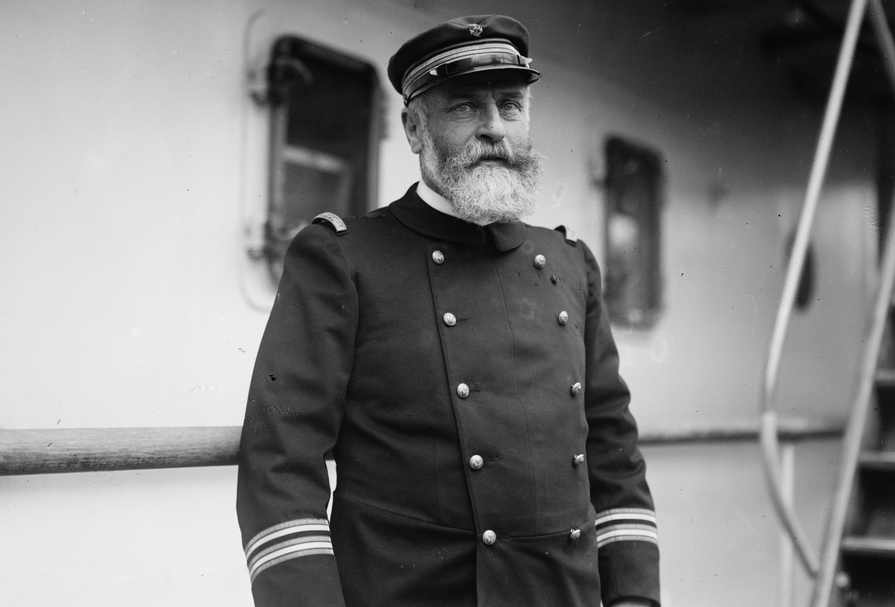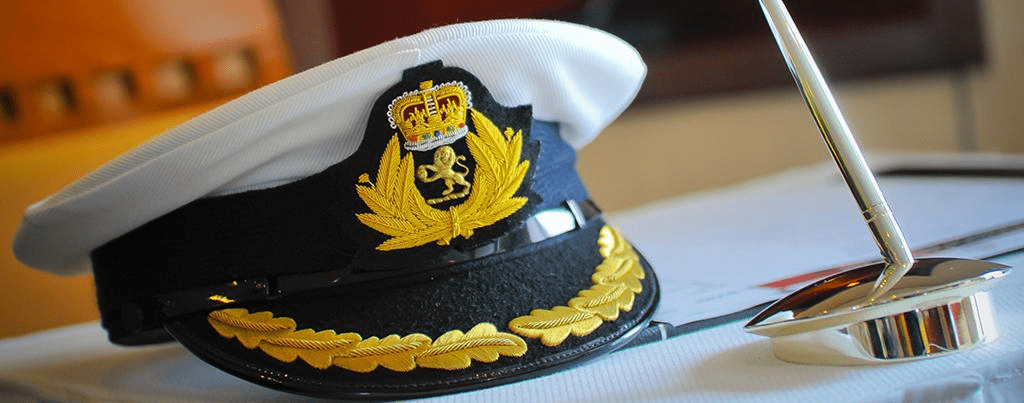The Merchant Navy has a long and storied history, with its uniforms reflecting the traditions, functionality, and evolving styles of maritime attire. In this article, we delve into the fascinating history of Merchant Navy uniforms, tracing their origins, developments, and significance within the maritime industry. From practicality at sea to the embodiment of professionalism, the Merchant Navy uniform has played a vital role in shaping the identity and pride of those who serve.
Early Uniforms: Practicality Meets Functionality

It goes back to a recent past as the history of the title ‘Merchant Navy’. It is said that it was first granted by King George V on the British merchant shipping fleets in a bid to honour their service in the First World War.Similarly, the idea of a particular uniform for the seafarers working on merchant vessels was introduced in the twentieth century, especially after the first world war. The naval forces, like other military forces, across the world, had already introduced uniforms a long time ago.
The offices and other crew members abroad a merchant’s vessel were allowed to choose their clothes according to their choices. Historians suggest that the work clothes of seafarers in the commercial vessels were not greatly different from those worn by peasants and other working class people.
Also read – Merchant Navy in World War II – Key Player in Global Operations
Origins of Uniformity

During the early days of maritime trade, uniformity in attire was not a primary concern. Sailors and officers wore garments that were practical for life at sea, often consisting of loose-fitting clothing made from durable materials such as canvas or heavy wool. These early outfits were more focused on protecting individuals from the harsh elements of the ocean rather than establishing a unified appearance.
Development of Rank Differentiation

As maritime trade expanded and formal organizations like the East India Company emerged, the need for rank differentiation became apparent. In the 18th century, uniforms began to incorporate distinguishing features such as varying colors, trimmings, and badges to denote an individual’s rank and position onboard. This development not only facilitated a clear chain of command but also instilled a sense of discipline and order among the crew.
19th Century: Evolution and Elegance

Influence of Naval Uniforms
During the 19th century, the influence of naval uniforms became more prominent within the Merchant Navy. The adoption of naval-style uniforms allowed for greater alignment and recognition between the two branches of maritime service. These uniforms typically featured double-breasted jackets, brass buttons, and wide trousers, reflecting the formal and prestigious nature of the profession.
The Golden Age of the Clipper Ships
The mid-19th century marked the golden age of clipper ships, renowned for their speed and elegance. The uniforms of this era mirrored the splendor and refinement associated with these majestic vessels. Officers often wore elaborate uniforms with gold or silver braid, epaulets, and distinguishing insignia, projecting an image of authority and sophistication.
20th Century: Adaptation and Modernization
Influence of World Wars
The two World Wars of the 20th century brought significant changes to the Merchant Navy uniform. During these conflicts, merchant ships were requisitioned for war efforts, and their crews played an integral role in transporting troops and supplies. To enhance safety and visibility, uniforms incorporated features such as reflective patches and life jackets, ensuring the crew’s protection in case of emergencies.
Transition to Practical Attire
Following the World Wars, a shift towards practicality and functionality influenced the design of Merchant Navy uniforms. Traditional naval-inspired attire gave way to more streamlined and utilitarian garments. The focus was on comfort, ease of movement, and adaptability to various weather conditions. Synthetic fabrics and advancements in technology allowed for the production of lightweight and quick-drying uniforms, catering to the demands of a modern seafaring profession.
How Uniforms become a part of the culture of merchant navy
The uniforms became part of the culture of merchant navy after the passenger ships introduced systems of stripes and badges to identify its crew members from travellers. The system also helped to identify officers from other crewmembers such as seamen or ratings.
The successful implementation of this system abroad the passenger ships attracted the attention of merchant ship owners in Britain and other major countries in Europe. According to historical documents, there was no official uniform for merchant navy until 1918 when the British Board of Trade introduced it for the first time.

According to the Royal Museums Greenwich, most of the merchant uniforms in the museum collection date from the 20th century, including the standard uniform introduced in 1918.Apart from helping to identify the ranks of seafarers, the uniforms also talked about the responsibilities of a crew member and brought more discipline into their job. The shining epaulettes on the shoulders reflected the responsibilities performed at different times and other achievements of a seafarer.
Though the culture of uniform abroad the commercial vessels continued until 1970’s, the later years witnessed people moving away from such formal characteristics, especially in the case of merchant vessels. While the crew working abroad passenger vessels continued to be dressed up in their uniforms, the other commercial vessels focussed more on operational capabilities making other sophisticated cments optional.
At the same time, Merchant Navy cap badges were also issued in Britain. In terms of Insignia, the uniforms with full golden stripes are meant for deck officers, while engineer officers will have golden stripes with purple colour in between on their uniforms. The gold stripes with green colour and red colour are being used on the uniforms of electrical officers and medical officers, respectively. The electrical officer wears the same stripe as that of a 3rd engineer or 2nd officer. The crew working as the chief steward or in the hospitality department will have golden stripes with white colour.
The uniform with wavy stripes and a diamond in between are for radio officers abroad the vessels. At the same time, the merchant navy uniforms that features stripes with diamond can only be used by Officers having the certificate of competency (COC). However, the features on the merchant navy dress display slight differences from country to country.
Similarly, the colours used between the stripes on the uniform also act as an element to differentiate the crew members according to their occupational hierarchy on board the vessel. Known as Merchant Navy Insignia, these designs were first issued for the merchant navy in the 1940s by Admiralty, Britain.
Modern Merchant Navy Uniforms

Contemporary Styles and Standards
In the present day, Merchant Navy uniforms continue to evolve, adapting to changing trends, regulations, and industry requirements. The emphasis remains on professionalism, safety, and adherence to international standards. Modern uniforms often consist of smart and comfortable attire, with the incorporation of practical features such as high-visibility elements, fire-retardant materials, and ergonomic designs. These advancements reflect the industry’s commitment to ensuring the well-being of crew members and their ability to perform their duties effectively.
Symbolism and Identity

Beyond their practicality, Merchant Navy uniforms serve as symbols of pride, identity, and unity among seafarers. They foster a sense of camaraderie and professional belonging while honoring the rich heritage and legacy of the Merchant Navy. The uniform’s distinct features, such as cap badges, shoulder boards, and rank insignia, reinforce the hierarchy and command structure, underscoring the importance of discipline and teamwork onboard.
Currently, seafarers abroad commercial vessels, especially while working in the engine room or on deck, use boiler suits as a more usual uniform, while mariners working as bridge watchkeepers and masters prefer a simple white pilot shirt and black trousers.
The history of Merchant Navy uniforms is a testament to the evolution of maritime attire, reflecting the changing needs, influences, and values of the industry. From practicality and rank differentiation to elegance and modernization, these uniforms have played a significant role in shaping the identity and professionalism of those who serve in the Merchant Navy. As the industry continues to evolve, the uniform remains a symbol of tradition, unity, and the tireless dedication of seafarers across the globe.

